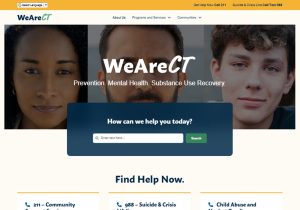Last week, the Connecticut Department of Social Services (DSS) heard from providers and stakeholders on the state’s Medicaid program about what is working well and where there are opportunities for improvement.
DSS has contracted with Accenture and Manatt to assist the Department in conducting a Medicaid Landscape Analysis intended to examine ways to improve the current Medicaid program, including whether there are opportunities to explore managed care options. This evaluation runs concurrent to DSS’s mandated development of a strategy to reform the state’s Medicaid program (HUSKY Health Report) by January 1, 2025, pursuant to Section 17 of Public Act 23-171, An Act Protecting Patients And Prohibiting Unnecessary Health Care Cost.
DSS facilitated three stakeholder meetings to inform the landscape analysis, including a Medicaid member meeting on October 30, the provider stakeholder meeting on November 7, and a general stakeholder meeting on November 8 as part of the Medical Assistance Program Oversight Council (MAPOC) meeting.
The Connecticut Hospital Association’s (CHA) Paul Kidwell, senior vice president of policy, and Mark Schaefer, vice president of system innovation and financing, spoke at the two stakeholder meetings, discussing current issues in the administration of the Medicaid program, including underpayment, access to post-acute care, and challenges with providing behavioral health services. They also detailed a vision for the future of Medicaid and CHA’s Medicaid redesign framework.
Kidwell underscored that Connecticut’s Medicaid underpayment puts significant pressure on commercial reimbursement, as Medicaid reimbursement rates that have largely remained stagnant since 2007 are not keeping pace with inflation and other cost drivers — a sentiment strongly supported by other participants. By resolving the shortfall, Kidwell stressed, the state also maximizes federal dollars. “Keeping rates low results in forgoing federal reimbursement,” he said.
Kidwell also highlighted opportunities to ensure patients are receiving timely care in appropriate settings by expanding access to post-acute care and behavioral healthcare, removing barriers that lead to backlogged emergency departments as inpatient settings become overloaded. Participants echoed concerns about pervasive throughput issues. He also described the need to ensure that patients ineligible for Medicaid due to their immigration status are able to receive the care they need in the right setting while ensuring that providers are reimbursed for that care.
Many stakeholders at the meetings, including hospital, primary care, behavioral healthcare, and home health leaders as well as lawmakers, health policy experts, and healthcare advocates voiced opposition to and concern over switching back to a managed care organization (MCO) Medicaid model, saying such proposals would not achieve improvement goals and would instead undermine the Medicaid program’s last decade of progress in administrative, cost, and operational efficiency.
During the MAPOC meeting, Schaefer reinforced the federal match advantages of a single reliable statewide infrastructure for credentialing, contracting, and claims. Schaefer explained Connecticut’s unique arrangement of dedicating administrative service organizations (ASO) to the management of medical, dental, and behavioral health promotes coordination of care.
“Having a single set of rules for prior authorization that apply to everybody on Medicaid, a million-plus lives, is super efficient,” Schaefer said. “And it is easy then to design your systems as a provider to interface with Medicaid and to follow the necessary steps around prior authorization without having to track a multitude of entities that might have different rules that are hard to negotiate.”
Schaefer emphasized that while the strength and value of the ASO model are evident, the state must swiftly pursue a proactive Medicaid reform strategy that focuses on upstream, root-cause drivers of health and prioritizes preventive, community-based interventions. Schaefer reiterated that the three pillars of CHA’s proposed Medicaid redesign framework offer a solution: address Medicaid hospital underpayment, engage multi-sector health partnerships, and establish a regional investment and accountability financing model that returns 100% of the savings generated by cross-sector collaboratives and care delivery improvements back to hospitals, community partners, and primary care providers. Critically, the innovative financing model in CHA’s recommended approach incentivizes the creation and upfront investment of initiatives that reduce chronic illness, ultimately producing substantial long-term savings.
CHA outlined its Medicaid redesign framework in a comment letter to DSS last month in response to the state’s request for feedback on Section 17 of PA 23-171. CHA continues to work with community partners and maintain an open dialogue with state officials on how to improve the Medicaid program. Materials and information related to Medicaid and Medicare reimbursement are available on CHA’s website here.





